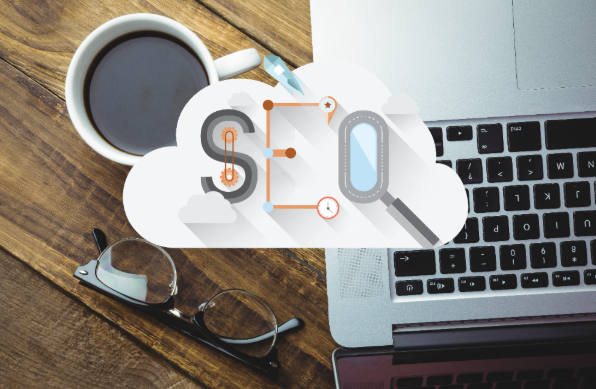
In the past, digital performance was mostly measured by surface-level numbers: how many people visited a site, how many followers a brand had, or how many views a post received. Those numbers are still tracked, but they don’t always tell the full story. Businesses and creators are starting to care more about what people actually do after clicking, viewing, or liking. The shift is moving from general exposure to real engagement.
Today’s digital environment rewards relevance and action, not just reach. Whether it’s someone watching a full video, returning to a website, or completing a small task, these moments show genuine interest. They also give a better picture of how well content is performing and whether users are actually finding what they came for. Focusing on the right metrics helps teams make smarter choices, use their time better, and spot what actually matters.
Click-Through Rates and Real Intent
Click-through rate (CTR) is one of the most important early signals of whether your content or ad is connecting with people. A high CTR usually means that what you’re offering matches what people are searching for or expecting to see. If the rate is low, it may point to a mismatch between the message and the audience, even if your page looks great or loads quickly.
Understandably, this is particularly important when using tools like Google AdWords. In that space, CTR doesn’t just show interest but affects how much you’re paying and where your ad appears. A well-written ad tied to the right keywords often gets better placement and costs less per click. For people or businesses who aren’t familiar with the platform, working with someone who understands how to build effective campaigns can prove worthwhile. Small adjustments in wording, keyword choices, or timing can raise CTR and result in better outcomes.
Conversions That Count
Getting people to your site is only the first step. What they do after they arrive tells you a lot more. Conversion tracking helps you measure whether visitors are taking action—filling out a contact form, signing up for a newsletter, making a purchase, or completing a download. These actions are what turn traffic into results.
Without tracking conversions, it’s hard to know whether your content is leading to real impact. A landing page could have thousands of views but no form submissions, and that would be a clear sign that something isn’t working. On the other hand, a page with fewer visits but a high conversion rate is doing its job well. Paying attention to conversions helps focus energy on what brings actual value.
Why Retention Matters
It’s easy to get excited about a spike in traffic. A viral post or successful campaign might bring in a rush of new visitors. But if those people don’t come back or continue to interact, the impact doesn’t last. Retention shows whether your content or service is meaningful enough for people to stick around.
Someone who returns to your site regularly or engages with your brand over time is far more valuable than a one-time visitor. Measuring return frequency and time between visits can reveal whether your content is building a lasting connection. A smaller audience that keeps coming back often signals more trust, better alignment with needs, and higher chances of continued support or sales.
Micro-Conversions
Not every important action is a sale or a sign-up. Sometimes, the steps that lead to bigger decisions are just as important. Micro-conversions include things like clicking through a product gallery, adding an item to a wishlist, watching a video, or checking a store locator. These actions show growing interest and give insight into where people are headed.
Tracking these smaller steps helps you understand the full path people take before making a final decision. For example, someone might view your pricing page multiple times over a week before making contact. If you only count the final form submission, you miss all the points of engagement that led there. Watching micro-conversions lets you fine-tune the journey and identify where users are paying attention.
Video Completion Over View Counts
It’s easy to be impressed by high video view counts, but that number only shows how many people started watching. It doesn’t tell you if they stayed interested. A video that gets thousands of views but is mostly skipped after the first few seconds may not be doing what you hoped. The completion rate, on the other hand, shows how many people watched to the end.
When someone finishes a video, it suggests that the content matched what they were expecting or at least held their attention. This matters most when the video includes important details like product information, instructions, or a message you need the audience to hear in full. Completion rates help you spot whether your content is paced well, clear, and valuable enough to keep people engaged.
Scroll Depth on Long-Form Content
Publishing a blog post or a detailed guide doesn’t guarantee that people will read the whole thing. That’s where scroll depth becomes useful. It tracks how far someone makes it down the page, which helps you figure out if people are reading the content or just skimming it.
If many visitors drop off before getting halfway through, it could mean the introduction is too long, or the layout isn’t user-friendly. On the other hand, if users consistently reach the end, your content is likely to meet their needs. This kind of data is especially helpful when creating long-form articles or landing pages where the goal is to walk people through a complete story or message.
Reading Between the Lines with Sentiment
Engagement numbers like likes and comments don’t always give you the full picture. Sentiment analysis looks at the tone and language people use in their feedback to help you understand how they actually feel.
For example, two ads may get the same number of shares, but one might include comments like “this is helpful” or “love this,” while the other includes sarcastic or critical replies. Looking at sentiment helps you interpret those interactions in a more meaningful way.
Customer Lifetime Value
Focusing only on getting the first click or sale can lead to short-term thinking. Customer lifetime value (CLV) shifts the focus to how long a customer sticks with your business, how often they return, and what they contribute over time.
For instance, a customer who makes a small purchase every month for a year is often more valuable than one who makes a big purchase once and never comes back. CLV helps businesses think more about long-term satisfaction and loyalty rather than just one-time wins.
Measuring digital performance helps in finding out what truly connects with people and understanding what leads to action, trust, and return visits. Whether it’s someone finishing a video, clicking through an ad, or returning week after week—these moments tell the real story. Looking at these deeper signals helps build strategies that last.

6 Tips To Unlock New Business Opportunities With My Aged Care Registration

The Hidden Business Power of Storytelling Through Books

Diamond Painting Apps & Digital Tools for 2025 Artists

Accelerating drug discovery through the DEL-ML-CS approach

AI in Marketing Is No Longer a Buzzword — It’s the Strategy
Fix GB WhatsApp Ban 2025 – Safe Usage Tips & Best Practices

Why a Shockproof Cover Is Your Best Defense Against Cracks

Benefits of Working with a Bathroom Remodeling SEO Company








